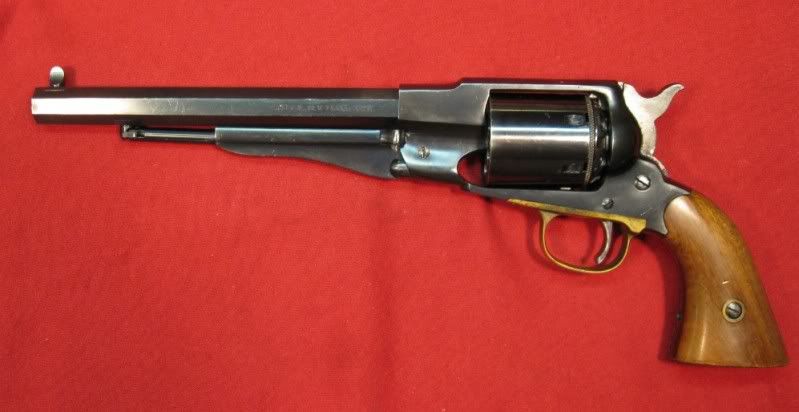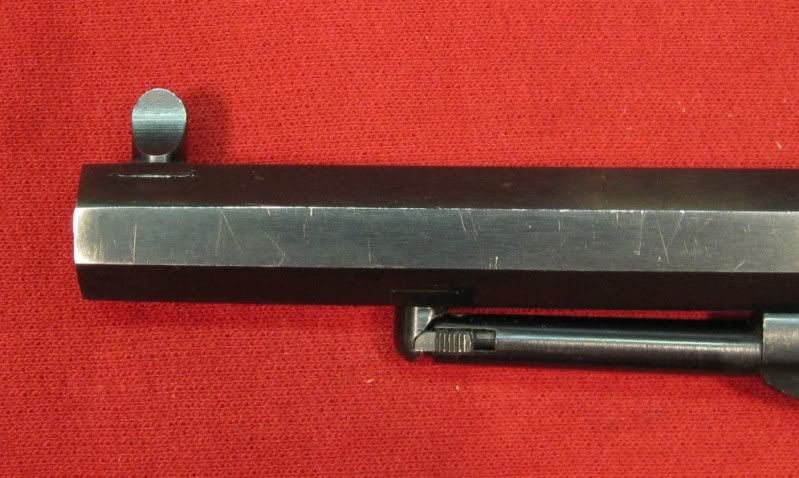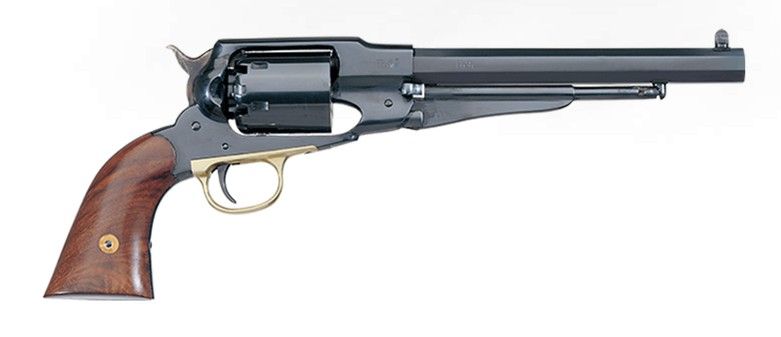Hey yall. I've noticed the front sight of my Uberti 1858 NMA
is machined higher than the pictures I've seen of original
1858s. Is this yet another Italian replica thing or ? Since
receiving my Uberti NMA, I have noticed that to shoot POA, I
must align the sight so that with my sight picture, the top of
the front sight is aligned with the bottom of the V in the frame.
If I align the sights on target so that the front sight is even with the rear notch in the frame, I noticed I shoot high. Idk if this is just me or if these
revolvers just naturally shoot high. I know with the Pietta Navy .36 I have
it shoots slightly low with the short, stubby bead sight. Any help would be appreciated!!
is machined higher than the pictures I've seen of original
1858s. Is this yet another Italian replica thing or ? Since
receiving my Uberti NMA, I have noticed that to shoot POA, I
must align the sight so that with my sight picture, the top of
the front sight is aligned with the bottom of the V in the frame.
If I align the sights on target so that the front sight is even with the rear notch in the frame, I noticed I shoot high. Idk if this is just me or if these
revolvers just naturally shoot high. I know with the Pietta Navy .36 I have
it shoots slightly low with the short, stubby bead sight. Any help would be appreciated!!




